AUSTRALIAN INTERNATIONAL AIRSHOW 2001 - Avalon Airport / Australia
Update: 2020/02/15 by Robert Kysela / CHK6
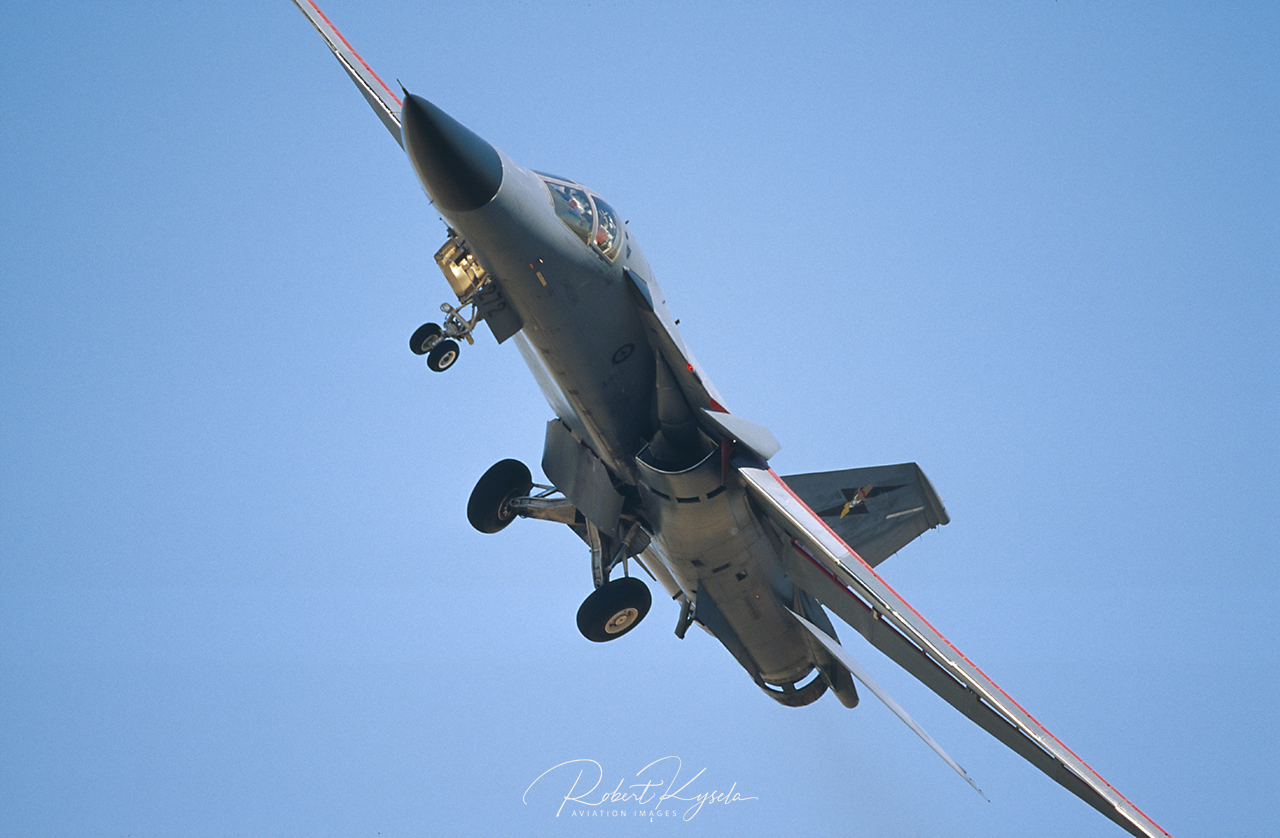
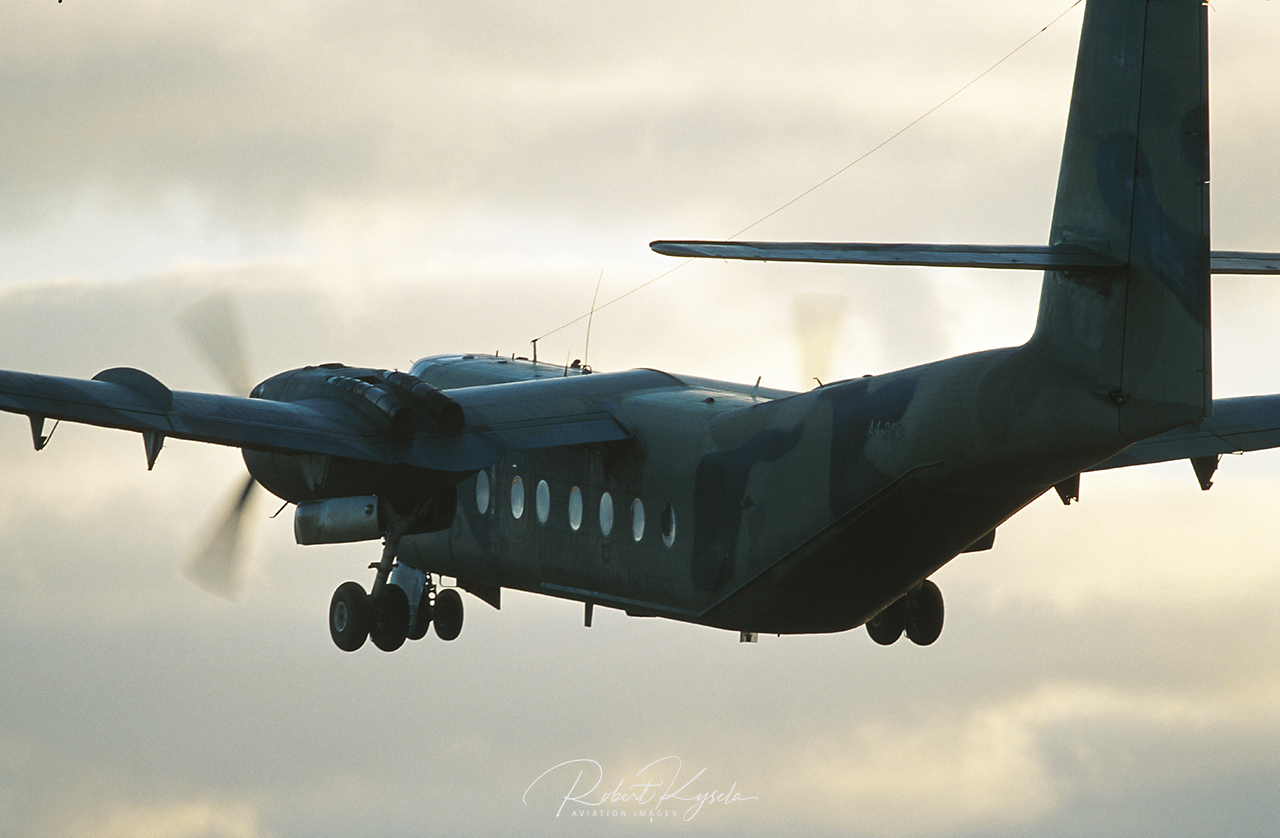
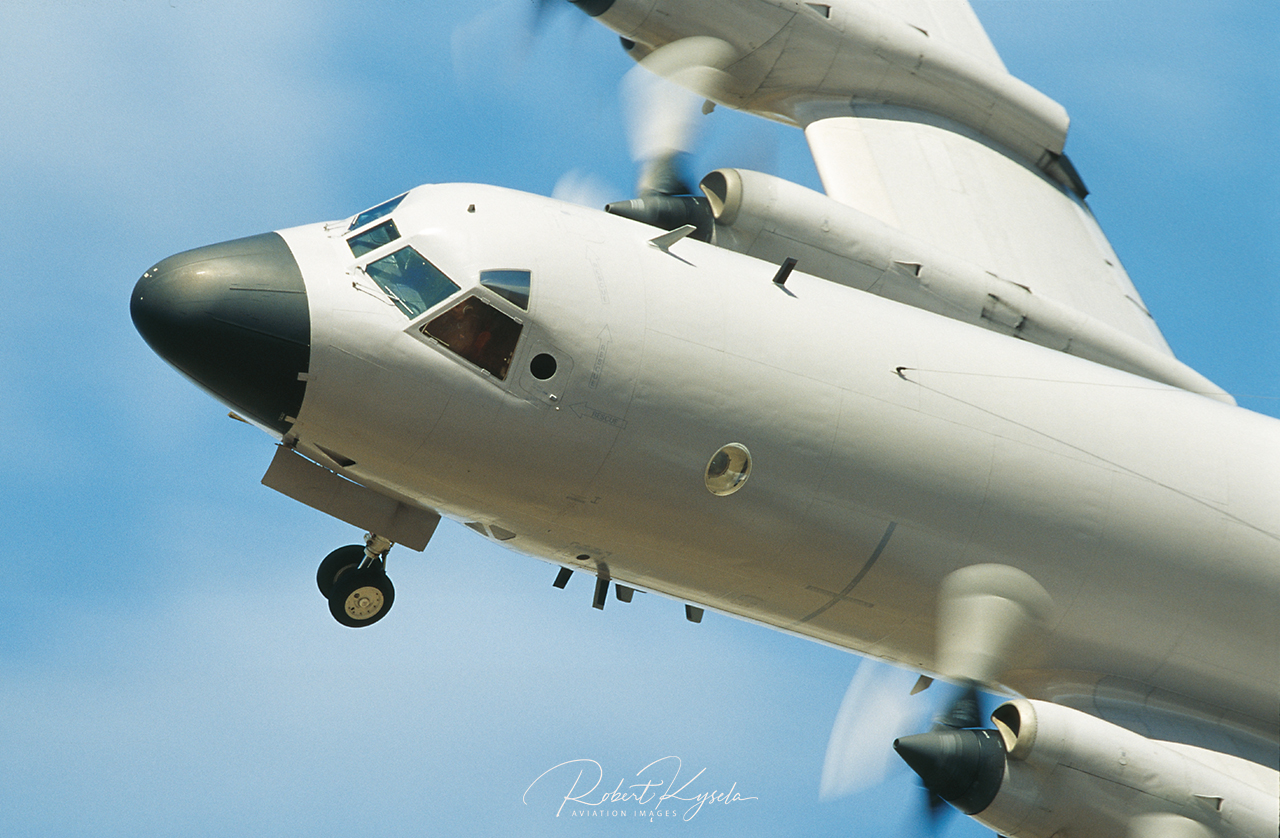
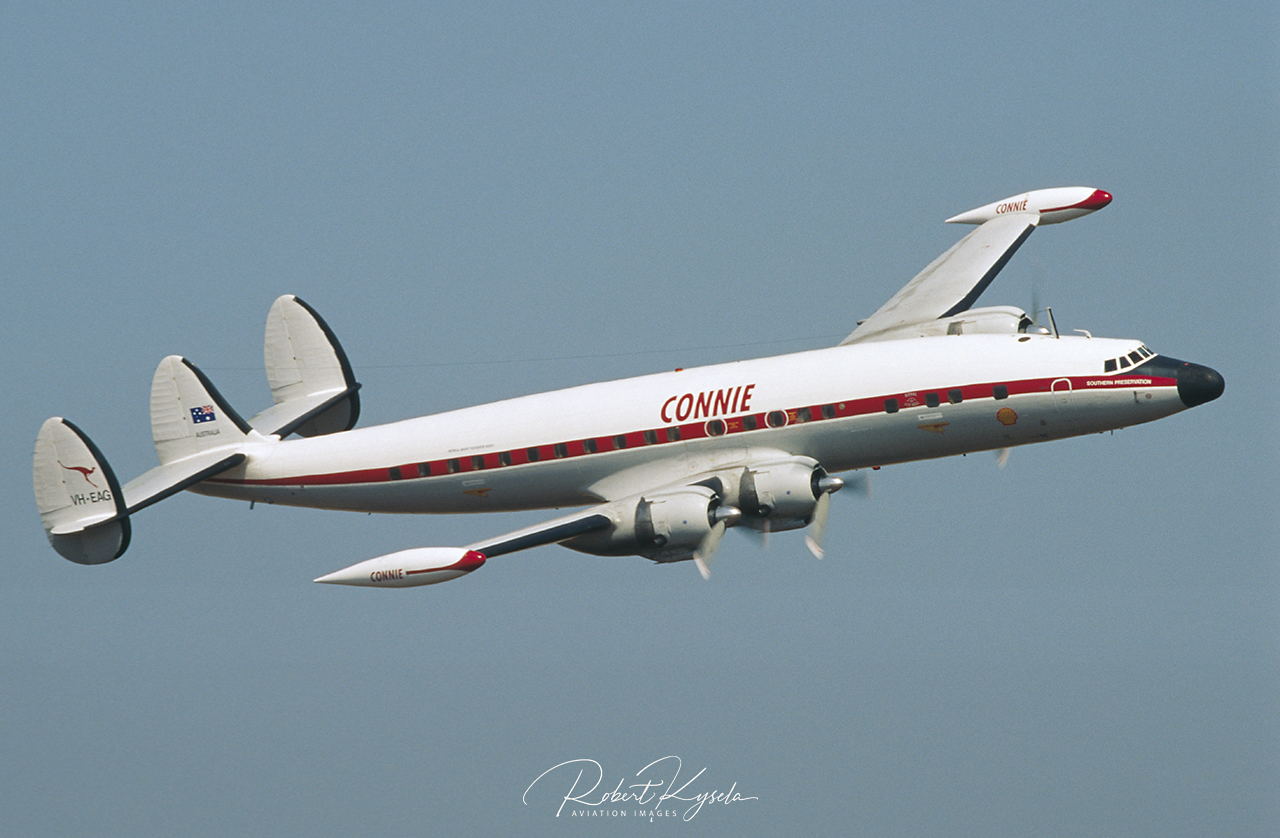
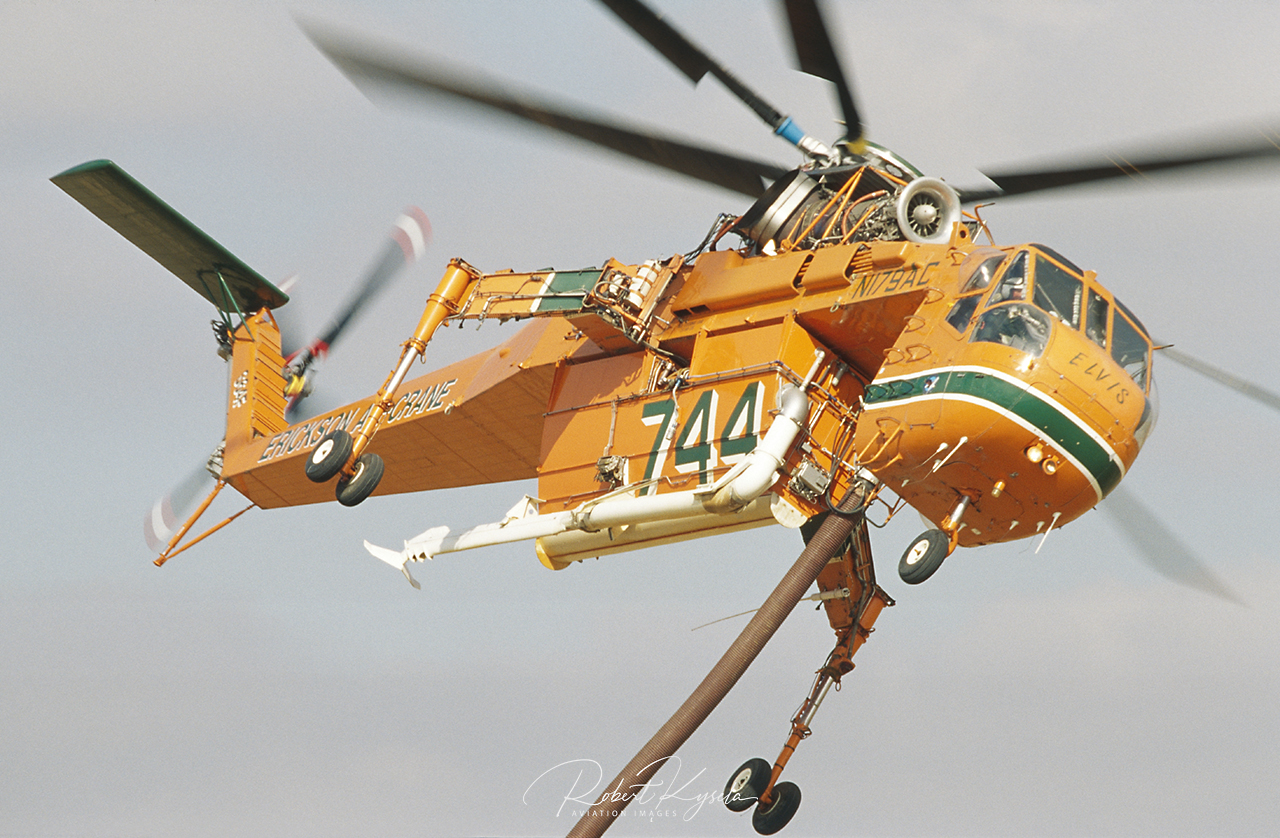
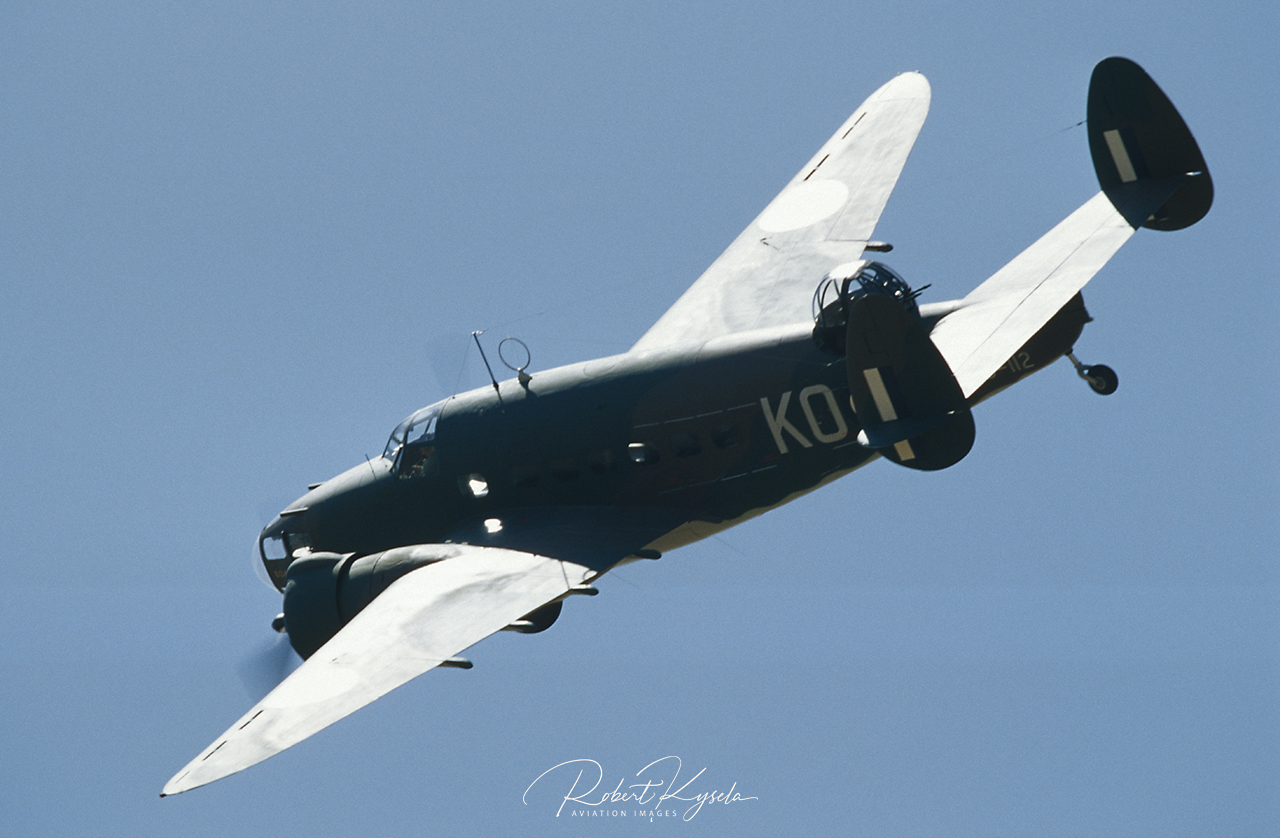
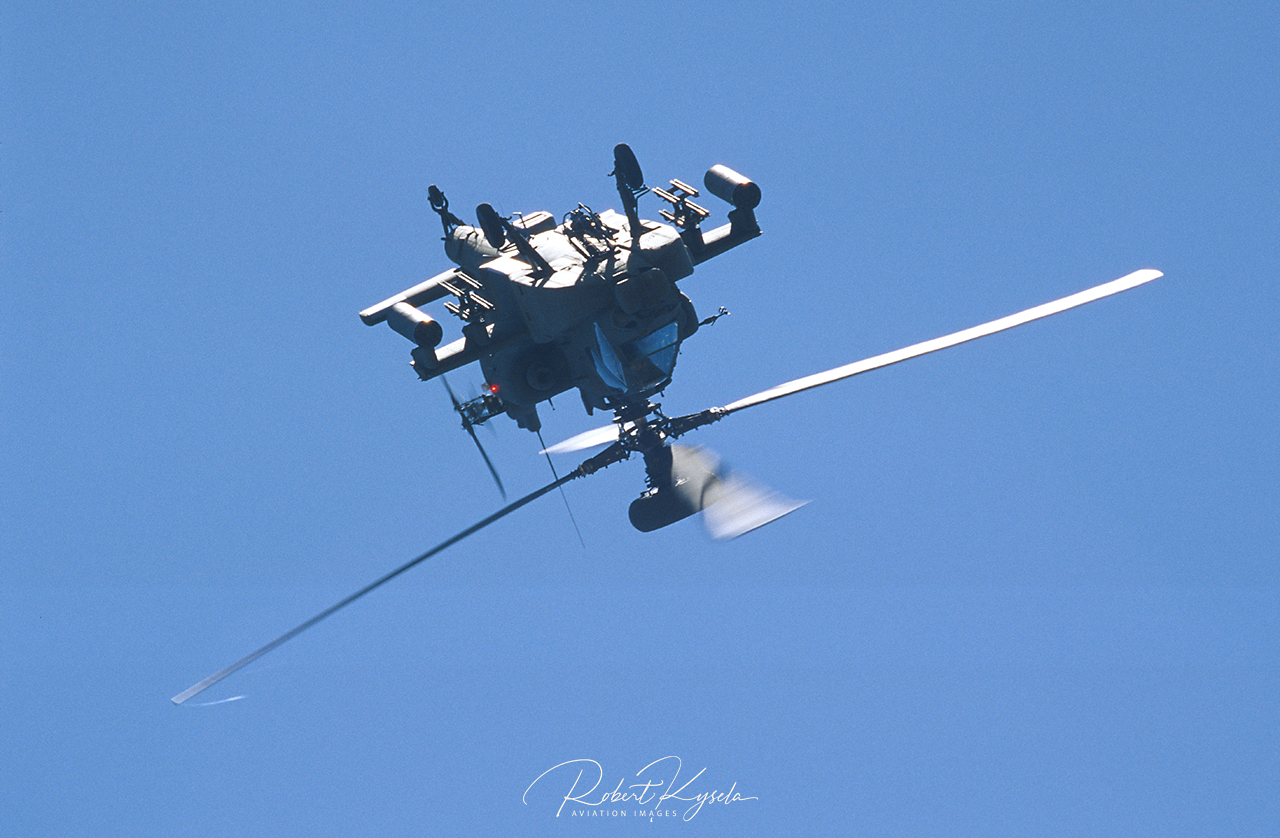
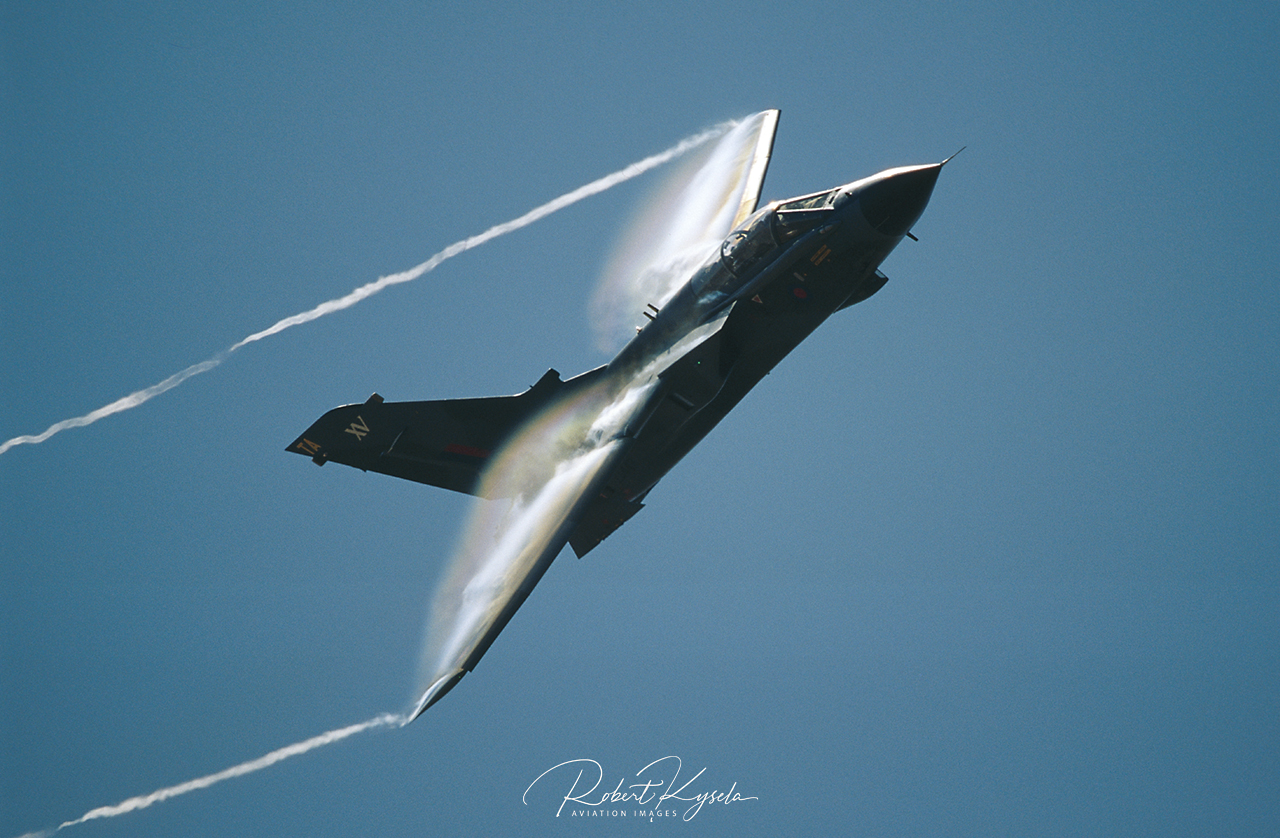
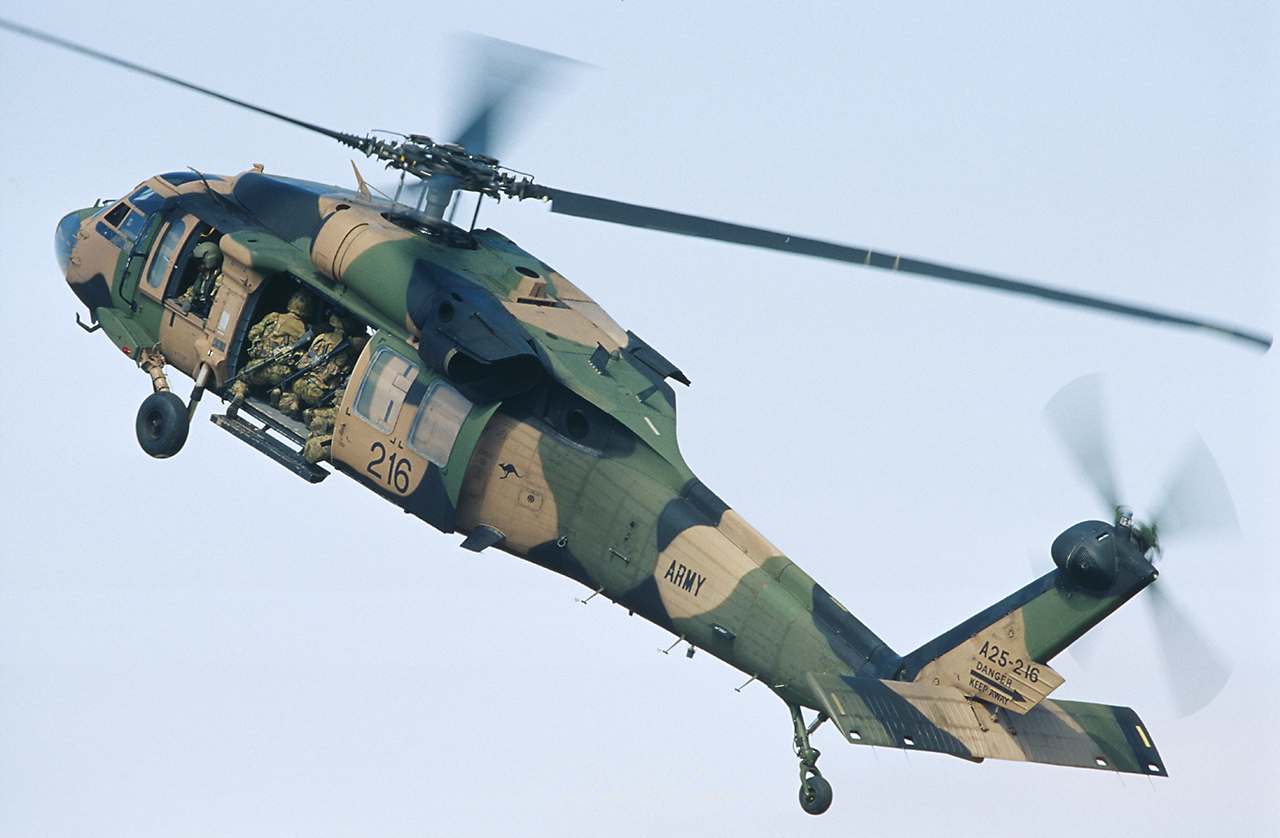
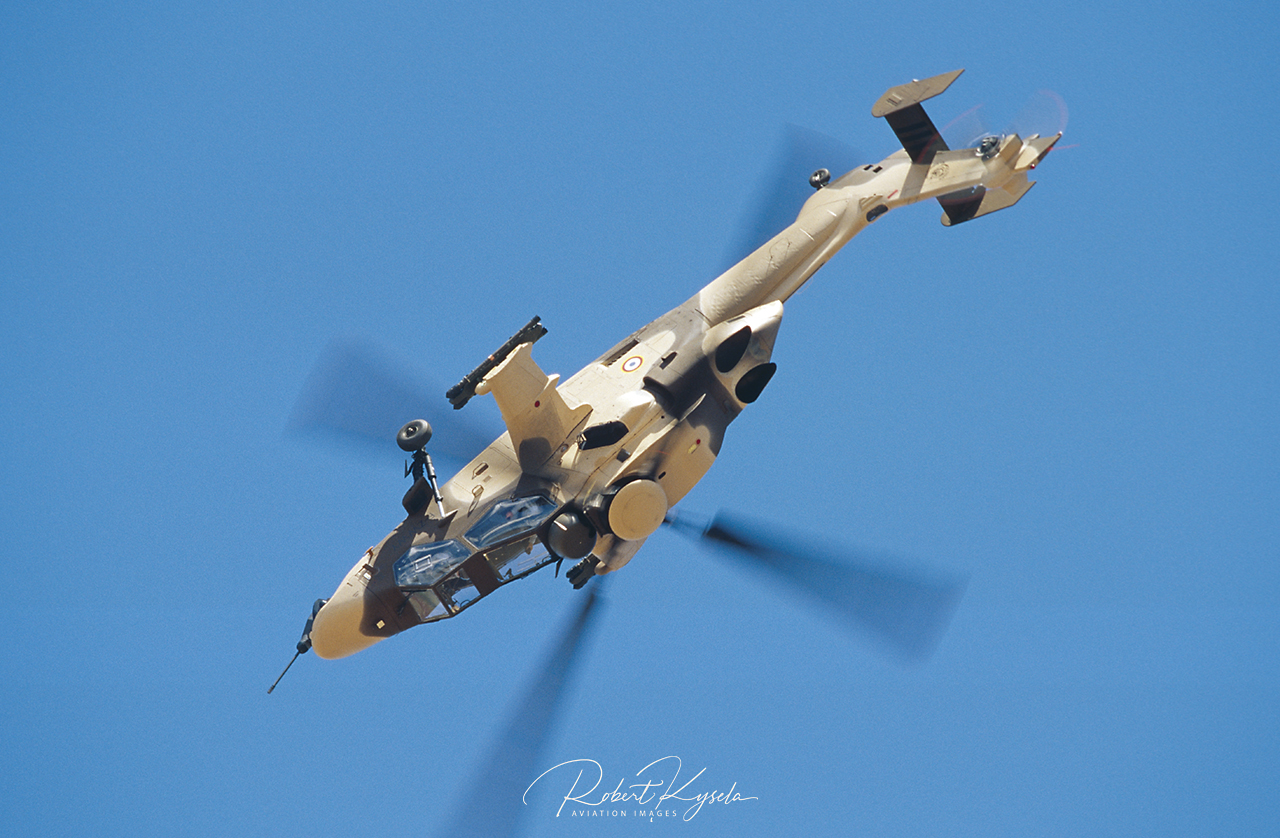
This year, one of the oldest independent Air Forces in the world, the Royal Australian Air Force ( RAAF), celebrates its 80th anniversary. On March 31st, 1921 the proclamation No. 28 concerning the foundation of an independent air combat force was formally signed by the Australian governor general. But the actual hour of birth of military aviation had been seven years before in Point Crook, south of Melbourne. A pilot of the newly founded Australian Flying Corps, which was a part of the Australian Army and therefore the equivalent to the British Royal Flying Corps, started for a test flight with the first Australian military aircraft, a Bristol Boxkite. Just a few months later (1915), the AFC was actively involved in WW I on the side of the allies. Until the end of the hostilities in November, 1918, no fewer than 2694 Australians served in the flying units of the Royal Flying Corps and the Royal Navy Air Service.
The highest ranking military person is the Chief of the Air Force, currently this is Air Marshall Errol McCormack
R. Kysela
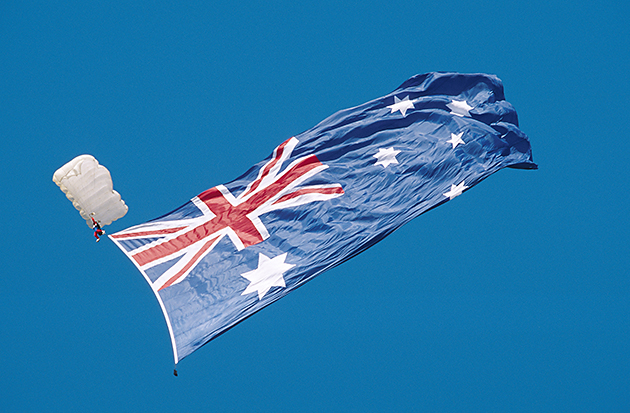
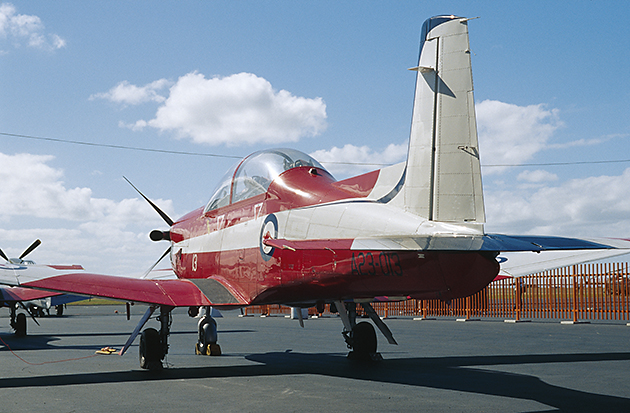
Currently, the RAAF employs 250 aircraft and a personnel of about 16 000 men and women. It is divided into two sub – areas, the Air Command and the Training Command. The Air Command, with its headquarters in Blenbrook (near Sidney) comprises of all operative units on nine bases with approximately 220 aircraft. The Training Command is, apart from pilot training, also responsible for any means of training concerning maintenance, logistics, and reconnaissance evaluation. The highest military person is the Chief of the Air Force, currently this is Air Marshall Errol McCormack.
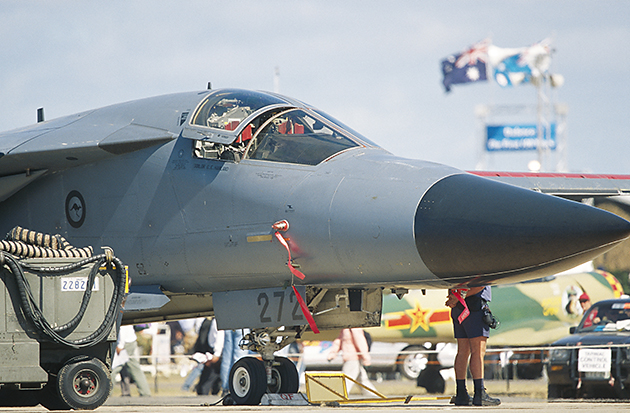
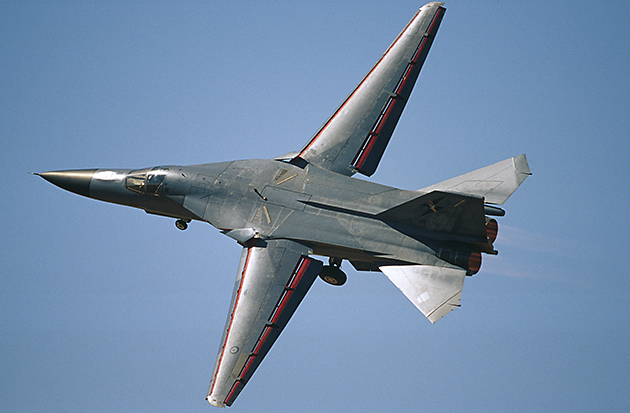
The perhaps most important and – at least when it was introduced – most disputed jet of the RAAF is the General Dynamics F-111C/G. Although it has been operative since 1973, the “pig”, that is its unofficial name, still provides a considerable combat potential. All 35 (17 F-111C, four RF-111C and 14 F-111G) machines are united in the Strike Reconnaissance Group with the No.1 and No.6 Squadron in Amberley / Queensland. Australia was the only export customer for this controversial, but very effective fighter. The F-111 rose to fame with its precision strikes on the Libyan capital of Tripoli as the answer to a bomb attack on a disco in Berlin the Libyan secret service was blamed for ( more about the Earth Pig at ”F-111 – Aardvark”).
There is no other plane capable of taking off and landing with a similar load on extremely short, unsurfaced landing strips
R. Kysela
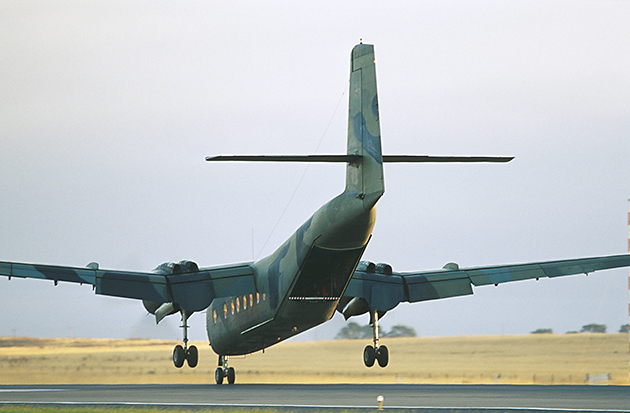
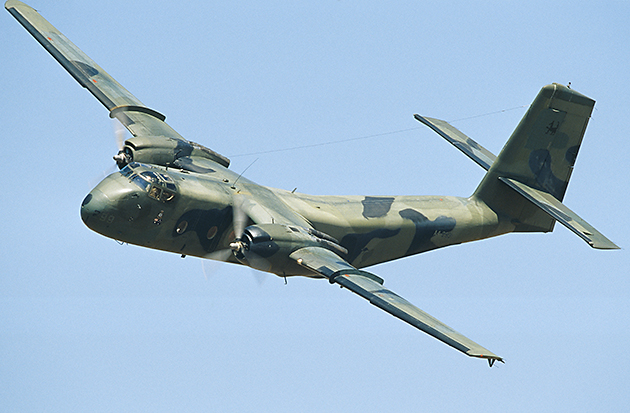
Located in the Northwest of Sidney, the RAAF base Richmond is the home of the Air Lift Group. The air lift group covers the transport demands of the RAAF with 24 Lockheed C-130H/J and five Boeing 707, four of which were adapted as a tanker for the Hornet fleet. Also to the Air Lift Group belongs the No.38 Squadron in Amberley, which employs 14 DeHavilland Canada DHC-4 Caribou, which are the oldest birds on active duty in the RAAF. Actually, this twin engine, tactical transporter is a very remarkable aircraft. There is no other plane capable of taking off and landing with a similar load on extremely short, unsurfaced landing strips. This is also the reason why the purchase of a successor causes a headache to the responsible persons in the Australian Air Force.
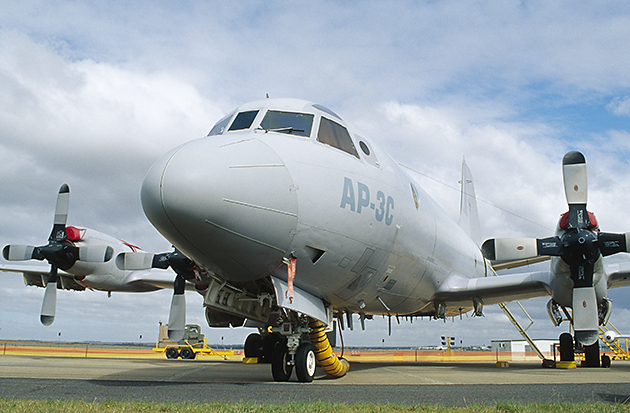
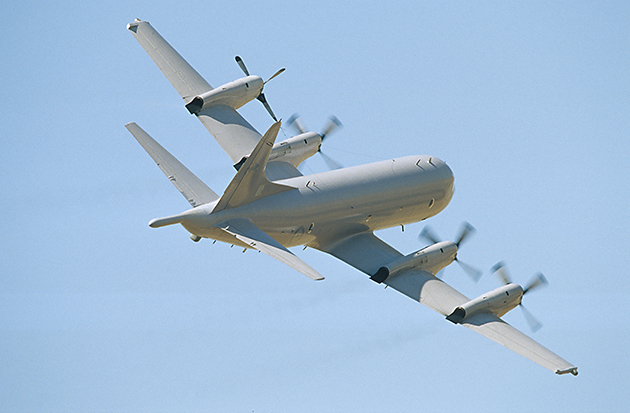
The third combat aircraft in the inventory of the RAAF is the four-engine sea reconnaissance / antisubmarine warfare aircraft Lockheed P-3C Orion. United in two squadrons (No. 10 & No. 11), the Orion has a remarkable radius of action, it can stay in the air for more than 12 hours, and it can employ a huge spectrum of weapons and devices.
Almost all the aircraft will be replaced within the next 10 years, or upgraded to the state-of-the-art.
R. Kysela
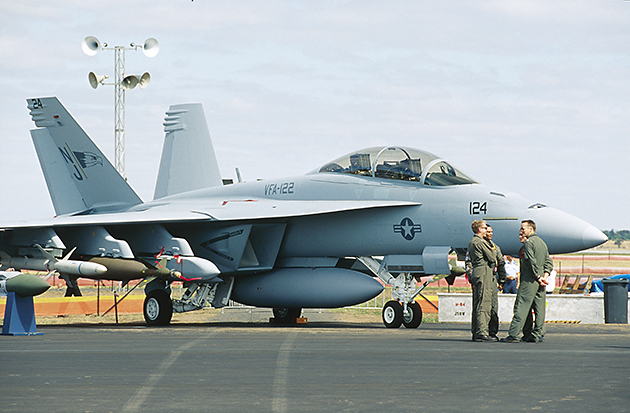
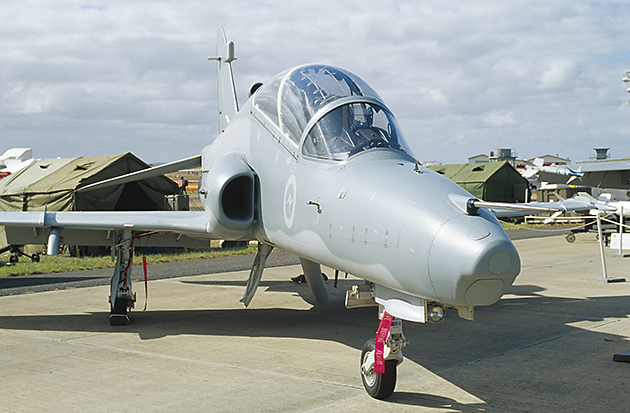
The Australian Air Force is currently undergoing a for these times unbelievable renewal process. Almost all the aircraft will be replaced within the next 10 years, or upgraded to the state-of-the-art. In contrast to many other countries, Australia is able to bring up the necessary budget. The budget for the Armed Forces will be increased by 25 % each year for the next 10 years in order to cover the enormous costs of this programme.
The first step includes a new purchase of the Boeing 737 AEW&C ( Airborne Early Warning & Control) until 2006 plus an option for three further until 2009. The Hornet fleet is currently undergoing an upgrade program called HUG (Hornet Upgrade Program), they are scheduled to remain operative until 2012, perhaps until 2015. As its direct successor, several aircraft are in the choice: Boeing F/A-18F Super Hornet, Eurofighter EF-2000 Typhoon, and Dassault Rafale. The decision has not been made yet. Also, the Lockheed Martin built F-22 Raptor is a candidate. It total, 75 machines are scheduled to be purchased. This aircraft shall then also take over the role of the F-111, which also undergoes an intense upgrade programme at the moment. The F-111 is supposed to be operative at least until 2015.
The modification of the Hercules fleet to the new C130J has partially been conducted, all remaining C-130H will be upgraded until 2008 to keep it fit for the next decade. More difficult is the replacement of the Caribou, which has been flying in the RAAF for 37 years. After all currently available aircraft have been evaluated in detail, it was decided to there is no type of aircraft that can directly replace this legendary aeroplane from the Vietnam war. Although the operating costs for the Caribou have become rather high, it will remain on active duty in the RAAF until at least 2010. Consequently, the hope of the Lockheed Alenia Group to sell its new C-27 Spartan as a replacement for the Caribou, has at the moment come to nothing.
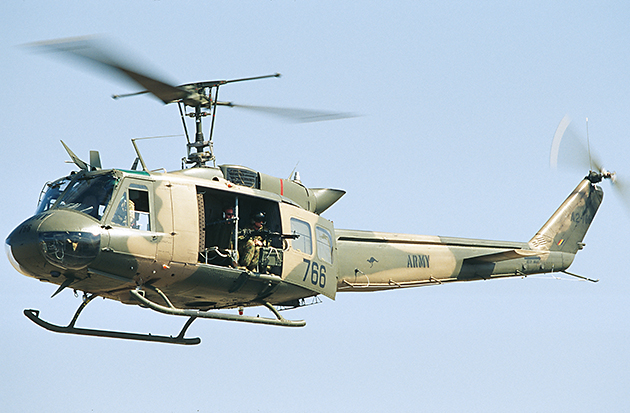

And finally, the helicopter fleet of the Australian Army is currently being brought to the state-of-the-art. The first step was the purchase of Sikorsky S-70A helicopters to replace the old Bell UH-1D. A new fighter helicopter is also at the disposal, potential candidates are the Eurocopter Tiger ( which is right now called “Aussie Tiger”), the Agusta Scorpion and the Apache from the Boeing company.
To sum up, the RAAF is on an excellent way to fulfil its tasks until far into the 21st century
R. Kysela
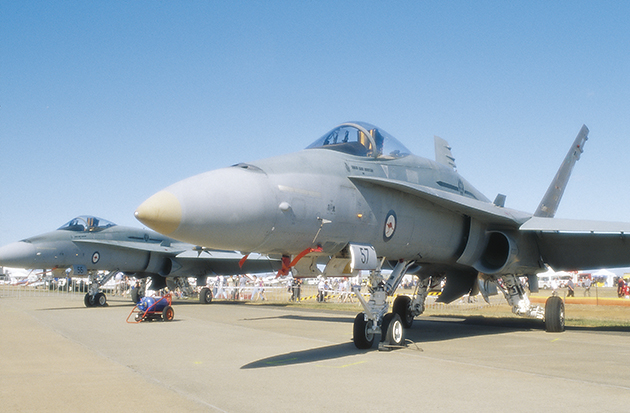
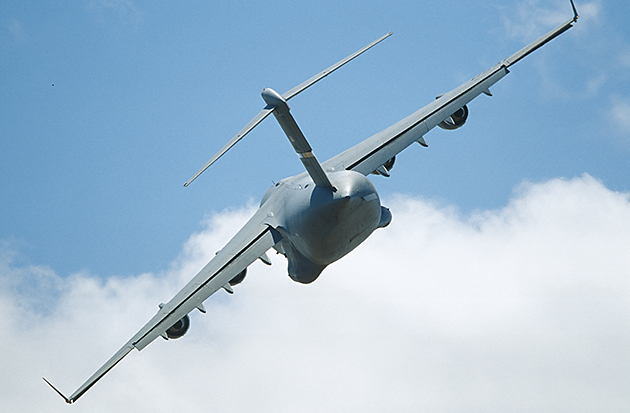
To sum up, the RAAF is on an excellent way to fulfil its tasks until far into the 21st century. Since Australia has been playing an increasingly important role in the Asian – pacific area after WW II, and intends, as the European countries, to take some more responsibility on international level, the purchase of appropriate technical equipment is a logical consequence from that. Australia has definitely learned form the mistakes that have been made in the past, and it has proved that a reasonable security policy can only be put into practice with an accordingly equipped Air Force. In this spirit, I would like to wish the RAAF some 80 more successful years.
Only few aircraft have caused more controversies in their career than the General Dynamics F-111 Aardvark
R. Kysela
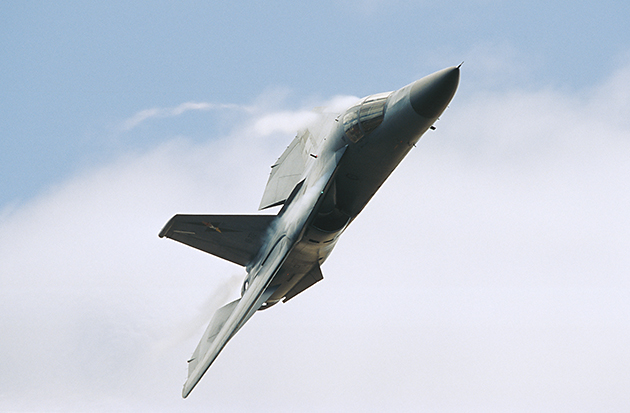
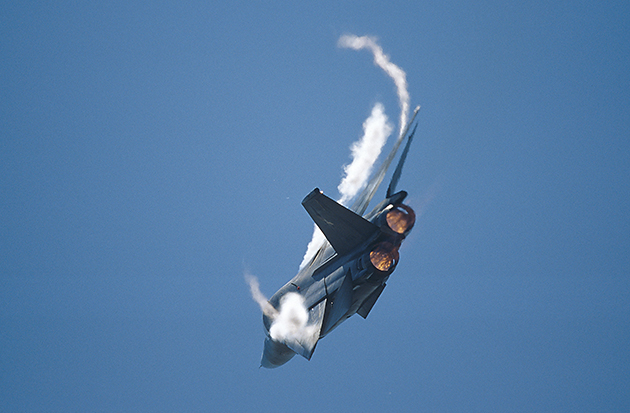
Only few aircraft have caused more controversies in their career than the General Dynamics F-111 Aardvark. Heavily disputed right before its maiden flight (Dec 21st, 1964), grounded for more than seven months after an accident, provided to the only export customer, Australia, with more than 10 years delay and confronted with enormously increased development and production costs, the One-eleven looks back at a very eventful past. But on the credit side of this fascinating machine we clock up great success and technical highlights which make the F – 111 one of the most effective tactical fighters of our days. In spite of its age of almost 40 years, thanks to upgrading processes, it is capable of fulfilling the requirements as hardly any other aircraft
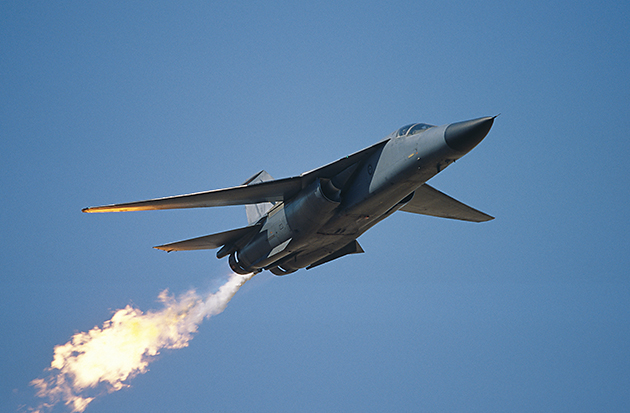
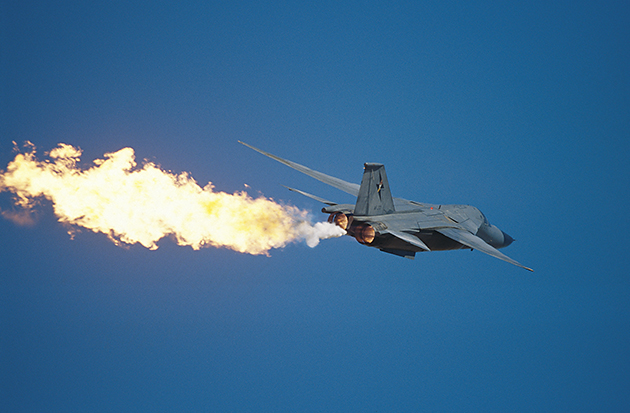
In October 1963 the decision was made to purchase 24 F – 111 for the Royal Australian Air Force, but it took until 1973, almost ten years, until the first F – 111 C were delivered to the Australians. After four machines had been converted for reconnaissance purposes, as a replacement four former F – 111A from the USAF were purchased and upgraded to the C standard. Already in 1985, the whole fleet was upgraded. The Pave Tack laser targeting system was installed, and the integration of modern weapons systems such as the AGM – 84 Harpoon anti-ship missile, the AGM – 88 HARM antiradar missile, and the Australian developed Karinga system (cluster bombs) was enabled. After this aircraft had been discharged from the USAF service, in 1993 15 more F – 111G (former F – 111A) were procured, 14 of them were taken in active duty. One F – 111C serves at the ARDU ( Aircraft Research & Development Unit ) at the Edinburgh / New South Wales Air Force base as a test aircraft for weapons development. At the beginning of the 90ies, all Australian Aardvarks underwent an Avionics Update Programme (AUP).
Although Australia is not really just around the next corner, the organizers did not have any reason to complain about a lack of participants of this anniversary air show
R. Kysela
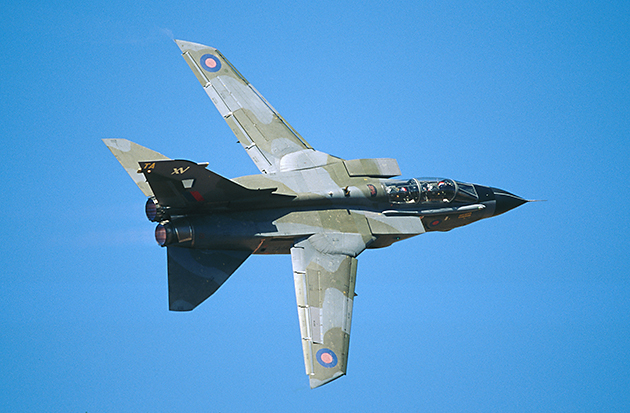
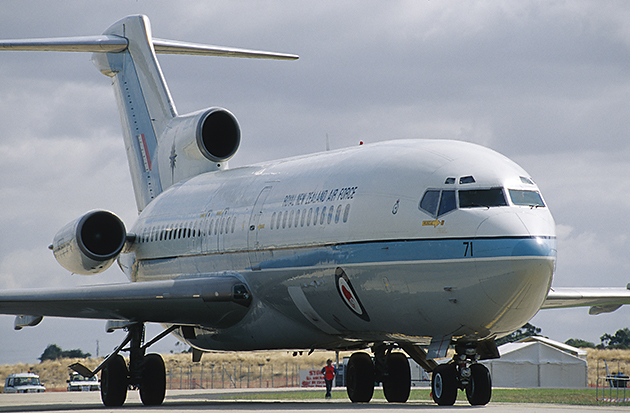
What was an birthday party without guests? Definitely only half the fun, but this is something you can absolutely not claim concerning the AVALON Air show. Although Australia is not really just around the next corner, the organizers did not have any reason to complain about a lack of participants of this anniversary air show. Apart from some local highlights, especially on the civilian sector, also the international participation was considerably strong, too.
As an escort aircraft for the British Tornado a Vickers VC-10 came to Avalon. This was probably the last visit of this type of aircraft in Australia, since the whole VC-10 fleet will be put out of service this year. Also a very rare machine is this Boeing 727 – 22C of the RNZAF you can see above. Since 1981, it has been flying for New Zealand, and is also scheduled to be discharged soon. Singapore sent a Boeing KC-135R and so in some way disappointed many enthusiasts who had hoped to see the A-4 Skyhawk from Singapore. Currently, the RSAF runs two Stratotanker, two more have been ordered yet.
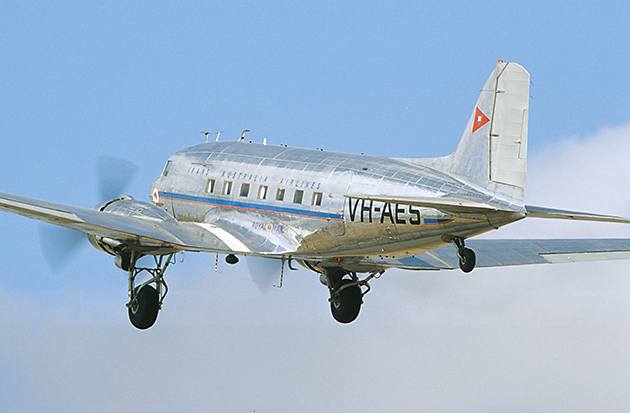
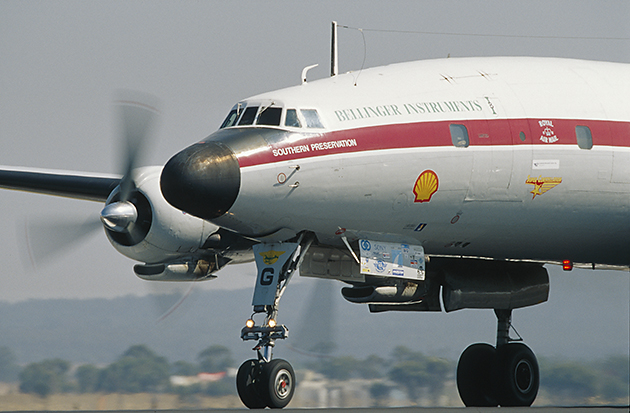
It was definitely a very special delight to see the Lockheed L-1049 Super Constellation of the Southern Preservation. This beautifully shaped post-war airliner forms a milestone in the history of aviation. With their 18 cylinder Wright R-3550 Turbo compound engines (3250 HP each) the machine reaches a cruise speed of 570 kph. In total, 856 aircraft from the Constellation series have been built. Another landmark in aviation history is the Douglas DC – 3 / C – 47 Dakota. To write about the DC – 3 was carrying coals to Newcastle. No less than five of these machines appeared in the static as well as in the flying display. Just enjoy the delightful pictures of this classic aircraft.
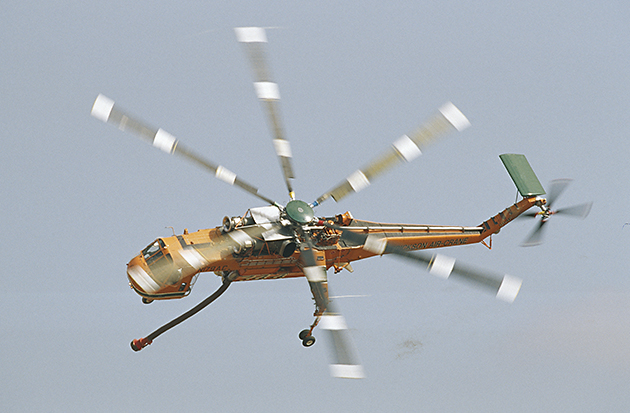
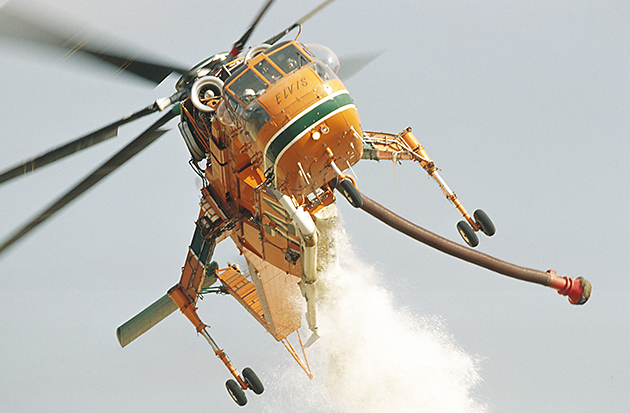
Especially the younger spectators were very much in favour of the firefighting demo of the Erickson Crane helicopter. Designed and built by the Sikorsky company (given the designation S-64A / military version designated as CH – 54A Tarhe), the license to build this heavy duty helicopter was given to the Erickson Air-Crane Co., Oregon. With its huge suction pipe it can take up 7500 litres of water in 45 seconds during hovering and then transport it to the trouble spot.
VERDICT: Although there were many more guests and well-wishers at this event south of Melbourne, we cannot present all of them – this would go beyond the scope of this review. What has to be added is that the Avalon Air show 2001 was a fantastic event with great international participation, and it can definitely match the big air shows all around the globe. With this respect I would like to thank Tom Bennett, Eddie Wassenaar, and the numerous Aussies. Without your help it would hardly have been possible to take these images!
Robert Kysela / CHK6

